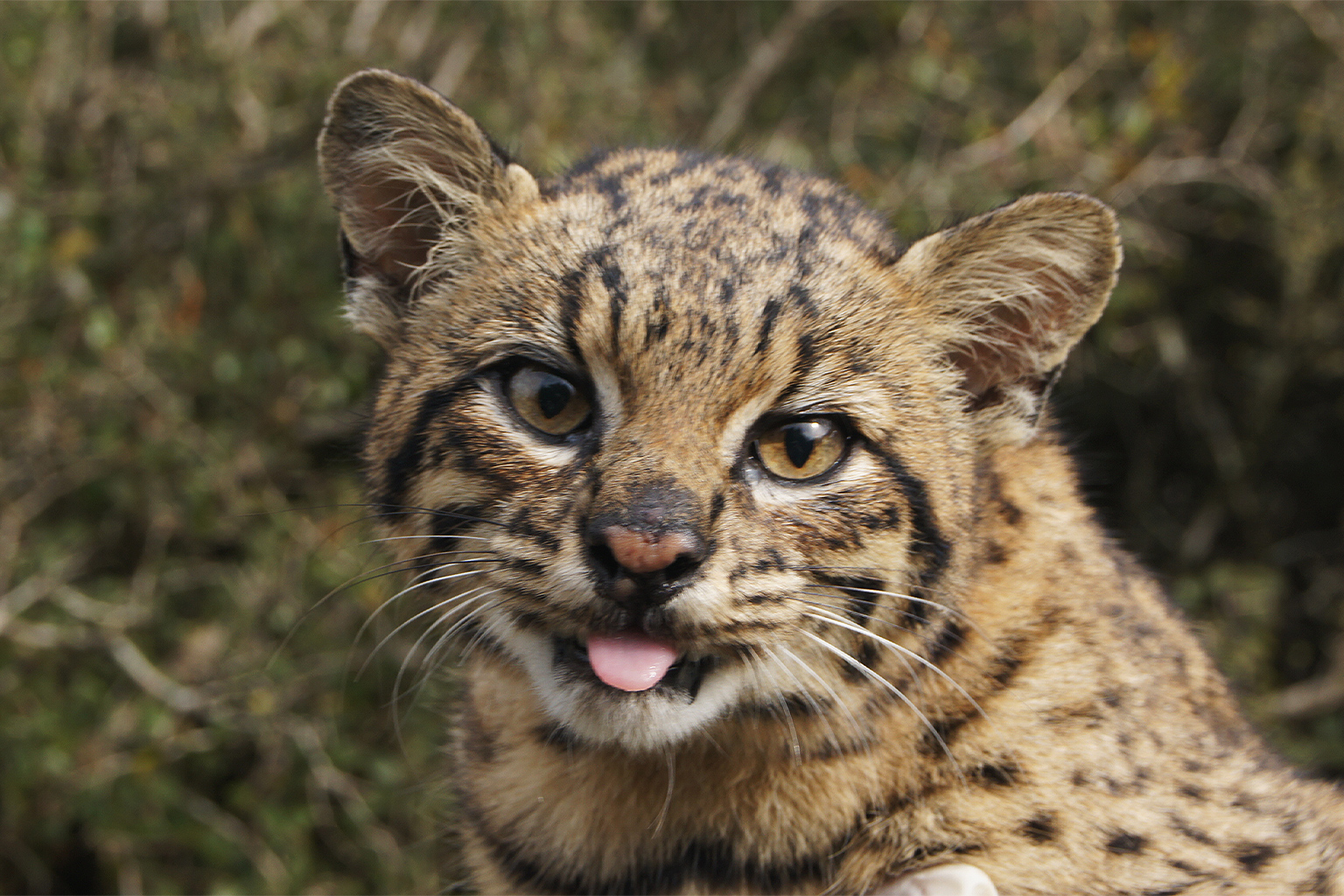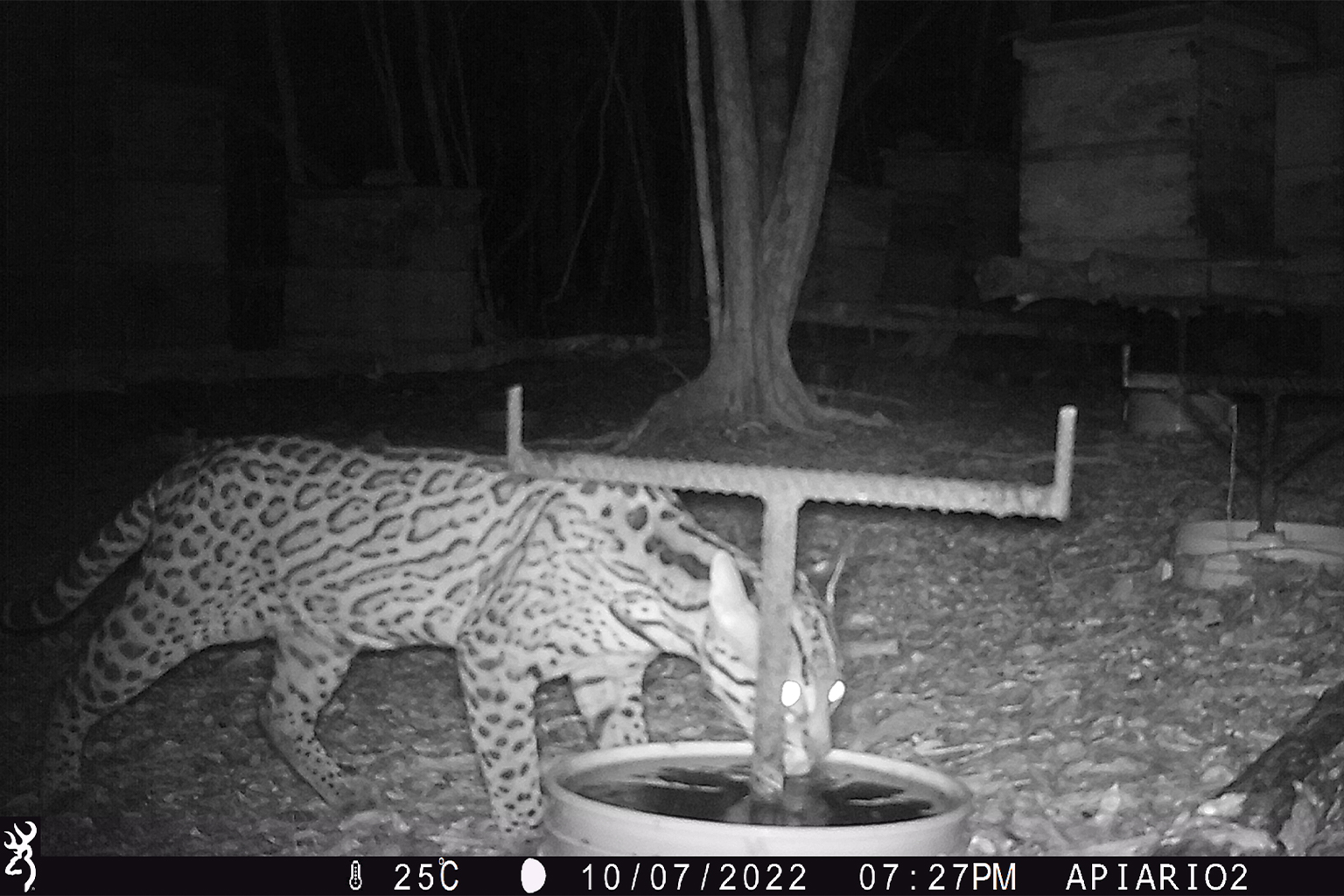- Small cat species can come into conflict with people across the globe, and though this plays out differently than big cat conflict, it can be devastating for farmers’ livelihoods.
- When these cats are seen as pests, they can become targets for retaliatory killings, which threatens their conservation.
- But experts say coexistence can be achieved if the appropriate action is taken to mitigate conflict.
- Popular strategies include supporting farmers and communities to construct reinforced predator-proof chicken coops, or ensuring compensation for losses, among other tailored solutions.
Big cat conflict is a threat to charismatic species like tigers and leopards. Small cat conflict, though often less severe, can also harm the livelihoods of communities and farmers and in some cases spell danger for these lesser-known felids.
There are more than 30 species of small cats found across the globe. Though they can bring benefits to both nature and people, they also often get into conflict with humans, just one of the multiple threats the face.
“The human-wildlife conflict between small cats and big cats is very different,” Wai-Ming Wong, director of the small cats program at the conservation NGO Panthera, told Mongabay. Big cats can cause significant economic losses, damage property or livestock, or result in loss of life in the worst-case scenarios, he said. Small cats aren’t a risk to human life as they raid smaller livestock, like chickens; but they can be devastating to farmers, nonetheless.
“When we talk about poultry, we’re talking about farmers that earn less than $50 a month,” said Zafeer Ahmed Shaikh, who is based in Pakistan and heads the Indus Fishing Cat Project. “So, when they lose a chicken, that’s a big deal for them.”
Some species, such as the leopard cat (Prionailurus bengalensis) or jungle cat (Felis chaus), can thrive in disturbed environments, including farmlands. In other instances, habitat loss or disturbance can drive species to search for food elsewhere, such as farmers’ backyards; so too can prey depletion.
And if these cats are seen as pests, it can spur retaliation.
“The opportunity here is that mitigating these conflicts can be relatively straightforward and cost-effective,” Wong said. “It also requires awareness raising and education around these issues.”
Fostering coexistence with small cats by mitigating conflict often comes down to relatively simple solutions, experts say.
“Conservation practitioners know how to solve these conflicts and that’s what we’re doing wherever small cats and people come into conflict,” said Jim Sanderson, director of the Small Wild Cat Conservation Foundation. Across the globe, one popular strategy is to provide material for catproofing chicken coops.

Keeping the cat at bay
Found in Latin America, Geoffroy’s cat (Leopardus geoffroyi) is about the size of a domestic cat. It isn’t a fussy eater, according to Flavia Tirelli, coordinator of the Geoffroy’s Cat Working Group. Though it preys mainly upon rodents, it will also take down anything it can, including chickens.
“They can live in areas that other wildcats cannot,” Tirelli said. “They can coexist in farmlands, which is good, but also bad for this species because they can also get into conflict with humans.”
Across Brazil, conservationists support communities by providing materials to build or repair catproof chicken coops. Tracking data of collared Geoffroy’s cats shows how successful this can be, Tirelli said.
In one case, a female cat and her kittens roamed close to a farmers’ household where the chickens ran free, making for easy pickings. “Before the chicken coops, the cats came to the open areas in the farm to catch chickens,” Tirelli said. “After the chicken coop … the cats moved back into the riparian forest.”
In Chile, reinforced coops and a tailless red chicken breed, known as the Mapuche hen or kollonka, are helping mitigate conflict between people and the Pampas cat, or colocolo (Leopardus colocolo), a small endemic feline.
The lack of a tail means the Mapuche hen can escape the paws of wildcats, said Carlos Castro-Pastene, a wildlife veterinarian and coordinator of the Colocolo Project. As wildcats can’t see the difference between red and green, a condition known as dichromatic vision, the red coloring of the hen also gives it with a form of natural camouflage.
“These two conditions make the Mapuche hen the best hens in Chile,” Castro-Pastene said.
As well as helping community members repair and build catproof chicken coops around Altos de Lircay National Reserve, Castro-Pastene and his team are breeding these hens, an effort that would be too costly otherwise, to recoup loses made by colocolo kills.
“This is an important part of our program,” he said. “The new hens can escape from the small wild cats, so the people don’t want to kill the cats.”


The small cat in context
Even though there’s a coop-shaped blueprint available to solve most small-cat conflicts, solutions also depend on the local context, conservationists say, as some species can cause different problems that require different solutions.
In Nepal, the fishing cat (Prionailurus viverrinus), a vulnerable wetland specialist, is often the target of retaliatory killings because it catches fish from fish farmers’ ponds. This conflict has become a considerable threat across the species’ range, according to conservationists.
Ganesh Puri, a wildlife ranger with Nepal’s Forest Department and founder of the Western Terai Fishing Cat Conservation Project, began working with communities to reduce conflict. The group set up dedicated fish ponds run by community members and farmers; when a fishing cat takes a farmer’s fish, replacements are provided from the communal pond.
“At the beginning we provided the fish hatchlings to the fish pond, so they can easily operate the fish bank project,” Puri said. “This is the main program for the conflict mitigation of the fishing cat.”
It’s a system that works, Puri said, and has led to changed perceptions of the wildcat among fish farmers, in tandem with other activities such as training a community-based conservation committee and the formation of Fishing Cat Guardian’s Clubs for children.

In other cases, addressing low-level conflict can open the door to tackling major threats, like land-use change.
In Thailand, Panthera is working to protect a population of fishing cats around Khao Sam Roi Yot National Park, which represents a stronghold for the species, according to Rattapan Pattanarangsan, conservation program manager at Panthera. Considered endangered within the country, this cat roams a landscape of fish farms and shrimp ponds.
“If there is conflict, usually the fishing cat will be wiped out,” Pattanarangsan said. “Since they don’t eat shrimp — they eat fish, birds and amphibians — people can live in harmony with them, because there is no competition.”
That doesn’t mean there’s no conflict; it flares up when cats plunder fighting-cock pens. These prized cocks are worth considerable sums. Though cockfighting is illegal in Thailand, providing solutions to ensure cats aren’t killed remains vital.
Pattanarangsan said addressing this lower-level conflict and focusing efforts on reducing conversion of land to industrial ponds — through other income-generating incentives like ecotourism — people and fishing cats can continue to live in a semblance of harmony.
“If land-use changes come with industrialized shrimp farming, it could be a long-term problem for the fishing cat,” he said. “The aim for us is to preserve the old-fashioned land use that is friendly to the fishing cat.”

Coexisting with small cats
Conservationists underline that while conflict mitigation strategies can be effective — Shaikh called the coops a “huge hit” with community members in Pakistan — there’s a need to expand these efforts more broadly.
“It has to be done at a much greater extent. Our project is much smaller compared to the size of the need. The need is huge but the project is small,” he said.
Puri agreed that there’s a need for similar conservation action across other areas of Nepal’s lowlands, particularly outside protected areas: “If we can extend to other parts of Nepal, we can ensure the survival of the fishing cat.”
The ultimate goal is to foster coexistence with small cats, and, in tandem, other species. In Pakistan, Shaikh said his teams also work to reduce conflict with jungle cats, jackals (Canis aureus) and Indian civets (Viverra zibetha). Projects must tackle issues specific to communities and be continuous, the experts say.
Working with traditional methods and knowledge is key when embarking on projects, said Castro-Pastene in Chile. In his case, the Mapuche hen isn’t a novel solution, rather one that’s being revived.
“A good idea is to see what the local people are doing, what are they doing to resolve the depredation?” Castro-Pastene said. “If you go to Peru, Ecuador or Amazonas, you can see the people live with the small wildcats and they have ideas for avoiding predation. We can all learn from this.”
Banner image: A fishing cat population around Khao Sam Roi Yot National Park represents a stronghold for the species in Thailand. Conflict occurs when cats hunt chickens, but as shrimp farms dominate, there’s potential for the species to coexist with farmers. Maintaining traditional farming practices and avoiding industrial-scale land-use change are key to the long-term preservation of the species in this area, says Panthera’s Rattapan Pattanarangsan. Image courtesy of Sebastian Kennerknecht/Panthera.
Mating game: Survival of some small wildcats at risk due to housecat hybrids
